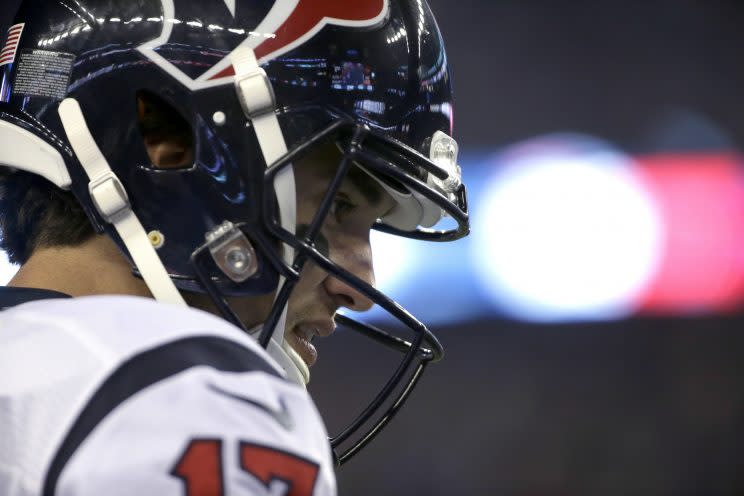Browns show off their new weapon – not Brock Osweiler – and appear to be trailblazers in creative trade maneuver
This is what the Cleveland Browns envisioned with their new regime: strip down, build up and, above all, attack the system any way possible to secure assets to help in that effort.
If that means finding a creative way to buy a draft pick, so be it.
Make no mistake: That’s what the Browns did with some of their salary-cap space on Thursday, the first official day of the 2017 league year. Despite the NFL barring teams from trading cash for draft picks, the Cleveland brain trust got imaginative and found a way to purchase a second-round pick from the Houston Texans, acquiring quarterback Brock Osweiler and his ugly contract. The trade looks like this:

• Cleveland gets Osweiler, a 2018 second-round pick and a 2017 sixth-round pick from the Texans. It also absorbs $16 million of Osweiler’s guaranteed salary on the 2017 cap.
• Houston gets a 2017 fourth-round pick from the Browns and clears $10 million in cap space immediately and $16 million in cash. Those improved finances could be used in the pursuit of Dallas Cowboys quarterback Tony Romo (although that remains to be seen).
Nobody has seen a team in the salary-cap era trade a fourth-round pick for a second- and sixth-round pick, and a low-level starting quarterback. It happens in other leagues, of course. Most notably the NBA, which allows a salary-dump trading approach that clears bad salaries off the books in exchange for draft pick sweeteners. That hasn’t flown on the NFL trade market until Thursday, when the Browns found an alternative way to weaponize their biggest asset: salary-cap space. The message being, “If we can’t spend it, we’ll trade it.”
That didn’t sit well with some other teams. Two league executives declined to comment on the trade, other than to ask if the NFL had officially approved it. The league did, ushering in a whole new approach to rebuilding rosters. With the cap rising exponentially and teams reticent to sign second- and third-tier players to overpaid deals, they now have the “Browns option” on the table. That lets teams know that cap space is open in trade talks, and a team can serve as a misfit island where mistakes can go. That’s what Osweiler became for the Texans. A mistake they needed to set adrift as soon as possible.
It remains to be seen whether the Browns ever see Osweiler in a uniform, but head of football operations Sashi Brown said, “We are intent on adding competition to every position on our roster and look forward to having Brock come in and compete.”
Either Brown is playing out the “competition” angle to make this trade look less like a cap-for-pick purchase agreement, or Cleveland will really take a look at Osweiler before dumping him. What’s clear is with their massive amount of cap room, they could easily carry Osweiler for a season and then dump him if necessary in 2018.
What is unclear is if this whole model will stand in the NFL. It’s certainly aggressive on the part of the Browns – and they deserve points for that. By all appearances, they didn’t violate anything overtly. But an argument can be made that the spirit of the rule disallowing a cash purchase of a draft pick is violated here. Money is money, and the Browns found a way to use theirs to recoup a second-round pick. If that’s OK with the league, it will most certainly happen again.
At the very least, it shows Cleveland is willing to push boundaries in this rebuild and the never-ending quest to lock down draft currency. The Browns threw some cash into the free-agency trade blender and siphoned off a nice 2018 draft piece. Now we’ll see if they’re the last team to pull off that feat.
More on Yahoo Sports:
• NFL free agency winners and losers (so far)
• Pat Forde: Notorious Duke star bounces back after latest skirmish
• Mets teammate says Tim Tebow ‘so far behind’

